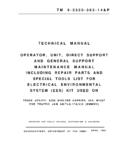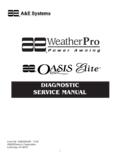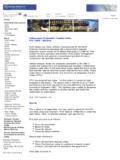Transcription of LPEFI® General Diagnostic Manual - Bi-Phase
1 LPEFI Liquid Propane Electronic Fuel Injection General Diagnostic Manual Revision 10 February, 2014 Manual # M4-121-10 Bi-Phase Technologies, LLC Eagan, Minnesota, This Manual is for General diagnosis that applies to any LPEFI system installed on any vehicle. Where there is a difference in components or installation, it will be identified by specific vehicle. The theory and diagnostics for the system are the same for any vehicle that the system might be installed on. However, the system is calibrated to a specific vehicle and some components, specifically injectors, cannot be interchanged. In this Manual you will find different approaches to diagnostics and troubleshooting. We will reference specific OEM repair manuals where a technician may need to obtain the OEM Manual to complete the diagnostics . In many cases, the propane injection system may not be the fault and further investigation of the engine control system may be required.
2 Remember the basics when troubleshooting. To prevent the replacement of good components it is necessary to have a General knowledge of both the LPEFI system and the vehicle. Read all instructions before use to avoid injury Anyone who performs repairs to the LPEFI system must be trained and certified. This is a propane system and anyone who performs repairs must have knowledge of Liquefied Petroleum Gases and understand safe handling and characteristics of such. Some states may require a license to work on propane vehicles. Consult your state or local authorities or your state propane gas association. Bi-Phase Technologies is not responsible for your oversight to comply with federal, state or local laws regulating the installation or repair of propane gas systems. The LPEFI system is a sequential multi-port fuel injection system that injects propane in a liquid state to the engine.
3 It works the same way as a modern sequential multi-port gasoline fuel injection system and can be diagnosed with the same Diagnostic scanners used for gasoline vehicles. The LPEFI system is covered by and International patents. The LPEFI system is also certified to the United States standards. The information in this Manual is believed to be accurate as of its date of publication but it is subject to change. Up-to-date information and changes, if any, can be requested from Bi-Phase Technologies. In the event of any safety-related changes, Bi-Phase Technologies will notify all customers who returned the warranty registration card for the affected vehicles. For more information contact: Bi-Phase Technologies, LLC 2945 Lone Oak Drive, Suite 150 Eagan, MN 55121 (952) 886-6450 (888) 465-0571 Tech. Support Line Propane Safety Warnings .. 1 Theory of Operation.
4 6 LPEFI Purge Logic .. 9 Idle Shut Down .. 12 LPEFI Diagnostic Equipment .. 14 Basic diagnostics .. 20 25 Transfer System .. 48 Service Procedures .. 51 Draining the Fuel Lines .. 51 Fuel Rail Removal .. 53 Fuel Line Removal .. 55 The WYE .. 57 Installing Fuel Lines .. 59 65 LPDM .. 69 YLPDM .. 70 Auxiliary LPDM .. 71 Scavenge Pump .. 75 Fuel Pump .. 80 Purging a Tank .. 81 Purging the Transfer System .. 83 Drain/Evacuate a Tank .. 84 Preventative Maintenance .. 89 Leak Checking the System .. 93 Tank Valves .. 100 Specifications .. 104 Spark Plugs/Sending Units .. 104 Calibration Codes .. 105 LPCM .. 106 Wire Harness s .. 110 Tank/Hose Schematic .. 127 Contact Information .. 1 39 TABLE OF CONTENTS Bi-Phase Technologies, LLC Page left blank for notes Bi-Phase Technologies LPEFI PROPANE SAFETY 1 This is a safety alert symbol.
5 It is used throughout this Manual to alert you to potential hazards. Whenever you see this symbol, you should read and obey the safety warnings that follow. Failure to obey these warnings could result in serious personal injury or property damage. Warning: Never loosen fitting s or vent any propane. Escaping propane can cause frostbite and severe freeze burns. Wear insulated PVC rubber gloves resistant to propane, goggles for protection against accidental release of pressurized products, and thermal protective clothing when handling refrigerated liquids. Propane is stored as a liquid. When you release liquid propane, it tries to evaporate as quickly as it can, by absorbing heat from its surroundings. Everything it touches gets chilled to -44 degrees F (-42 degrees C). If liquid propane sprays on your skin, it will freeze it. Anyone who works with liquid propane must wear PVC insulated rubber gloves.
6 Danger: Do not remove any valves, bulkheads, or fitting s from a tank unless the tank has been drained completely. The pressure inside a propane tank can push a loosened bulkhead or valve out with enough force to cause injury or death. Propane is stored under pressure. When you remove a valve or bulkhead from the tank, all of the pressure is released at once in a violent rush. Always drain the tank before you work on it. Failure to do this will result in damage to the tank or valves and can result in severe injury or death. You should drain the tank by the fuel transfer method and/or by using a flare stack in an approved safe manner. Your propane supplier can help you with this. _____ _____ Bi-Phase Technologies LPEFI PROPANE SAFETY 2 Warning: Keep all sources of ignition away from propane vehicles while the fuel system is being serviced.
7 Even if the tank and fuel lines are empty, there may still be flammable vapors near the vehicle. Do not allow smoking, sparks, flames, recent or running vehicles or other sources of ignition when fueling, servicing and vented propane. Failure to do this could result in fire or explosion, causing severe property damage, injury or death. _____ Warning: Do not disconnect any propane hoses unless they have been properly drained completely. Propane in the hoses is kept under pressure, even when the engine is off. When you disconnect a hose; the internal pressure is released all at once. Always drain the fuel lines before you disconnect them. Failure to do this can result in damage to the hose fitting and possible injury. See repair procedures in this Manual for instructions. _____ _____ Danger: Do not vent or release propane indoors or near sewers, pits or low lying areas.
8 Propane can accumulate in low spots, creating a fire hazard. Propane can also displace oxygen, creating a suffocation hazard. Propane is heavier than air. It can fill low, sheltered areas with flammable vapors. If these vapors are ignited, they can create a fire or explosion, causing severe property damage, injury or death. Never release propane near sewers, pits or indoors. _____ Bi-Phase Technologies LPEFI PROPANE SAFETY 3 Propane gas is the most widely used alternative fuel, with nearly 4 million vehicles worldwide running on propane. More than 350,000 vehicles run on propane in the according to the Department of Energy s Alternative Fuels Data Center. Propane powered vehicles offer the best combination of durability, performance and driving range. The first propane powered vehicle ran in 1913. Bi-Phase Technologies LPEFI (Liquid Propane Electronic Fuel Injection) system has surpassed other technologies today by introducing liquid fuel injection.
9 This technology improves power, efficiency and operating characteristics. For more information, call for our General Information and Training Manual . Safety comes first is a motto you should always live by. Without knowledge of a product, it is hard to follow this motto. In our manuals we try to stress the need for knowledge and provide warning signs to alert you. It is your responsibility to know the law. National Fire Protection Association (NFPA) has manuals to help you understand safe handling of many products. We recommend that you obtain and read their NFPA #58, Standard for the Storage and Handling of Liquefied Petroleum Gases. A number of training programs and efforts have been implemented throughout the country. The National Propane Gas Association has developed a Certified Employee Training Program (CETP), which provides service personnel with a complete technical training curriculum.
10 We encourage you to contact your state propane gas association or the National Propane Gas Association for more information on how you can benefit from such programs. Visit or for more information. (Commercial Propane) Bi-Phase Technologies LPEFI PROPANE SAFETY 4 C3H8 Specific gravity of liquid (water = 1) at 60 degrees F. Initial boiling point at psia, in degrees F. - Weight in pounds per gallon of liquid at 60 degrees F. Cubic ft. of vapor per gallon at 60 degrees F. Cubic ft. of vapor per pound at 60 degrees F. Specific gravity of vapor (air = 1) at 60 degrees F. Ignition temperature in air, in degrees F. 920 to 1120 Maximum flame temperature in air, in degrees F. 3,595 Limits of flammability in air Percent of vapor in air/gas mixture Lower Upper Air/Fuel ratio by volume :1 Air/Fuel ratio by weight 24:1 Octane number as it relates to gasoline 98 to 102 Heating values BTU per cubic foot 2,488 BTU per pound 21,548 BTU per gallon 91,500 Chemical formula C3H8 Vapor pressure in psig 70 degrees F 127 100 degrees F 196 105 degrees F 210 Bi-Phase Technologies LPEFI PROPANE SAFETY 5 Definitions The following index will help define various acronyms discussed throughout the General Diagnosis Manual .






